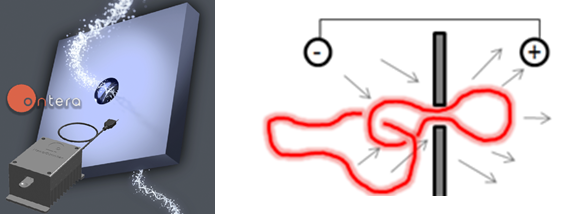Student Experiments Could Lead to More Effective Preemptive Care and Treatment for Deadly Infections in Humans
Long Beach, CALIF. - Physics students, out of Professor Alexander Klotz's CSULB lab, are using Nanopore technology to improve diagnostic tools for genetic diseases and parasitic infections in humans. The implications of Nathan Howald and Sierra Breyer's research could mean an improved understanding of susceptibility to certain diseases, better access to care, and more effective treatments.

Nathan Howald, physics graduate student

Sierra Breyer, physics undergraduate student

Dr. Alex Klotz, associate professor in the Physics and Astronomy Department
Under the direction of Dr. Klotz, an assistant professor in the Department of Physics and Astronomy at CSU Long Beach, both Howald and Breyer are using a Nanopore to look at different types of DNA. A Nanopore is a machine with a 10-50 nanometer (0.1% the width of a strand of hair) sized hole that can electrically detect DNA molecules as they pass through, used in the sequencing and mapping of DNA fragments. While the two are conducting different experiments the implications of both projects may universally improve the diagnosis and treatment of various illnesses in humans.

Howald, a second-year graduate student, looks at macroscopic genetic markers in DNA quickly and inexpensively with the Nanopore. To examine those markers, Howald and his team attach a binding protein to the DNA that passes through the Nanopore. That protein helps them discover which portions of the DNA are attracted to particular binding proteins and why. In the future, this technique could be used to identify genetic markers in the human genome quickly and inexpensively, for example, identifying disease susceptibility faster than techniques are currently able.
Another potential application Howald's research is point-of-care genomics, which will allow this technology to be mobile and used outside of a hospital setting to improve access to care.
"There is a lot of information about the behavior of complex DNA molecules that can be learned from watching them pass through tiny holes," says Klotz.
Breyer, is a fourth-year undergraduate student and her experiments using the Nanopore involve looking at Kinetoplast DNA, which comes from the mitochondria of parasites that infect mosquitos. The practical implications of her research are a better understanding of illnesses like sleeping sickness and Chagas disease as well as the development of more effective treatments and medications.
Banner photo credit: CDC/Dr. Myron G. Schultz - This media comes from the Centers for Disease Control and Prevention's Public Health Image Library (PHIL), with identification number #613.





